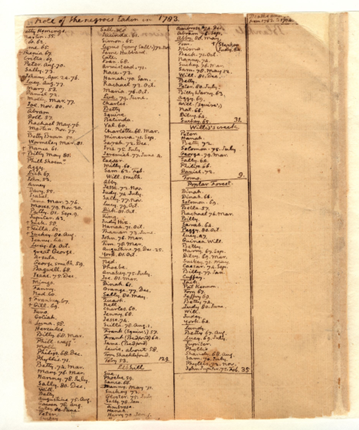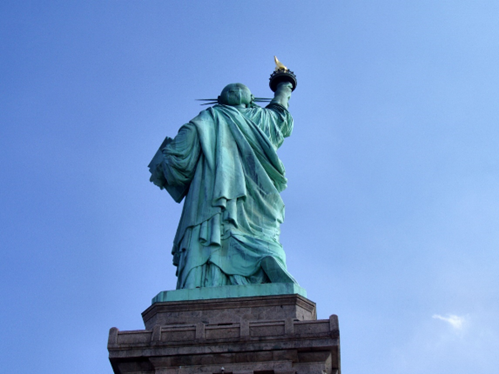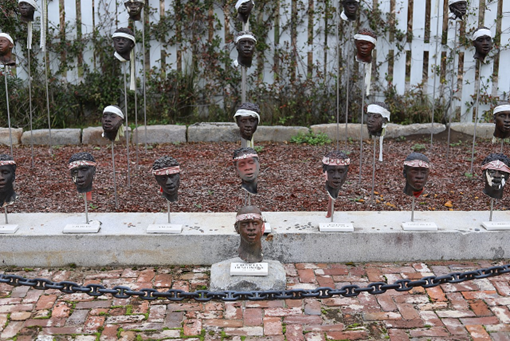|
Micki Luckey Among the many great books that document the history of slavery in the United States, none made me see its present impact as did How the Word is Passed by Clint Smith. Subtitled A Reckoning with the History of Slavery Across America, the book takes us to places in this country where we encounter present-day reminders of slavery, “places whose histories are inextricably tied to the story of human bondage.” Reading about what Smith saw and who he met brought up many feelings — distress, sadness and rage, along with an appreciation for all I was learning. Smith presents new, often surprising information at every site he documents. To explore different aspects of the history of slavery in this country, Smith takes us to a cemetery, a monument, a prison and more. He talked with residents, guides, and scholars, who shared their personal experiences and remembrances. While the book title comes from the Getting the Word oral history project of the 1930s, it is through the voices in this book that the word continues to be passed. Smith ends How the Word is Passed by sharing bits of his family story as well: “My grandfather’s grandfather was enslaved. … My grandparent’s voices are a museum I am still learning how to visit.” Smith has created his own kind of museum by sharing the stories in this book. Below I share some highlights, but I recommend you open this book and enter the museum yourself for the fascinating details you will find there. Monticello Thomas Jefferson considered himself a “benign slave owner.” Yet he broke up families to buy and sell enslaved children as young as 11 and 13. Smith first takes us to Monticello, the estate of Thomas Jefferson near Charlottesville, Virginia, which is toured by thousands every year. There we learn Jefferson’s complex views on slavery. The man who famously wrote in the Declaration of Independence that all men are created equal also wrote in Notes on the State of Virginia that Blacks are inferior to whites “in body and mind.” Jefferson believed that if emancipation were achieved, it would be impossible for Blacks and whites to live together peacefully. Like other rich landowners of the time, Jefferson owned hundreds of enslaved Africans who were the foundation of his wealth. Over his lifetime he sold a hundred people as property, and at his death 200 more were sold to pay his debts. It is well established that he had a relationship with one of the enslaved women on his estate, Sally Hemings, and fathered six of her children. Smith states, “The story of Sally Hemings sits at the center of Monticello” and is the focus of an exhibit at the Monticello Museum. Many visitors to Monticello do not expect this focus. Smith interviews two who described themselves as well-informed about American history and yet are startled by what they learn there. Many white people are not just surprised but upset by what they encounter. In July of 2022, Tucker Carlson interviewed a neo-confederate who accused the exhibit of “trashing Thomas Jefferson’s good name.” It is no wonder there are few Black tour guides at Monticello, Smith reports, as they too often receive responses of disbelief, insensitive comments, and even harassment from white guests. New York City During the Civil War the mayor of New York City wanted to secede from the Union to allow residents to keep their enslaved servants. Smith took a walking tour on slavery and the Underground Railroad in the financial district of New York City. His guide Damaras emphasized that people view the North as “the good guys” in the Civil War, and yet for many years New York City had more enslaved Black people than any other urban center in North America. The tour included the site of an oyster house that served as a stop on the Underground Railroad, as well as the African Burial Ground National Monument where the remains unearthed during excavations were reburied — right there in the center of Manhattan. A small plaque at the corner of Water and Wall Streets, nestled between huge signs for CitiBank and Bank of America, portrays the the former market where enslaved Africans were auctioned at that spot, prompting Smith to comment on the ties of the large banks to chattel slavery. A kiosk in Central Park marks the site where land belonging to free Blacks in the thriving neighborhood of Seneca Village — called “Nigger Village” in the NY Daily Times (precursor to the NY Times) — was cleared out by eminent domain to make room for the park. The residents who resisted were forcibly removed. A new museum on Liberty Island testifies that abolition of slavery was an important concept behind the design of the Statue of Liberty, although it had to be toned down so much that the broken chains at her foot are hard to see except by helicopter. Like the chains on Lady Liberty, much that Smith revealed is commonly overlooked by the millions of visitors to New York City and probably most of its residents, who are unaware of its history of slavery. Whitney Plantation
One of the restored Southern plantations invokes a different kind of tourism as a museum focused on the history of slavery. As he approached the Whitney Plantation, Smith encountered the sculpted heads of some of the enslaved men who rebelled and paid with their lives — a clear signal that this was not a typical restored plantation. Whitney is the only plantation dedicated to the people who were enslaved there. John Cummings bought the property as a real estate investment in 1998. After reading a history of the plantation, he educated himself about slavery and created a museum dedicated to its enslaved workers. To “populate” the grounds he commissioned life-size sculptures of children who, as emancipated adults, were interviewed for the Federal Writers Project of the Depression. In addition, the names of 354 people enslaved at Whitney are engraved in white on granite slabs in the memorial. Some of the guides working at the Whitney Plantation are descendants of people who were enslaved workers there. They live in the nearby community of Wallace, Louisiana, with a population that is 90% Black, where much of the community still suffers from the inter-generational poverty that plagues many formerly enslaved communities. In 2022 that community faces a new threat: the land around it is targeted for construction of a 250-foot-tall grain elevator by the agribusiness giant, Greenfield. Construction is currently halted to investigate whether it would disrupt land believed to contain unmarked graves of enslaved plantation laborers. Other sites In the rest of the book, Smith describes his visits to Angola Prison, the largest maximum-security prison in the U.S., where his guide had himself been incarcerated for thirty years; Blanford Cemetery dedicated to “Our Confederate Heroes”, where men in Confederate regalia marched carrying rifles with long bayonets on their shoulders while the crowd sang Dixie; and Galveston, Texas, where residents gathered to celebrate Juneteenth and to sing “Lift Every Voice and Sing,” the Black National Anthem. Lastly, to see where it all began, he visits the House of Slaves on Gorée Island, Senegal, where thousands of ships departed with their holds stuffed with enslaved Africans. Each site adds another dimension of the vibrant testaments to how slavery was and is still manifest in our country. As we visit the places and the people who maintain them, Smith’s descriptions imprint us with each facet of slavery’s legacy. Smith concludes his book by writing, “The history of slavery is the history of the United States. It was not peripheral to our founding; it was central to it. … This history is in our soil, it is in our policies, and it must, too, be in our memories. …At some point it is no longer a question of whether we can learn this history but whether we have the collective will to reckon with it.” Comments are closed.
|
Find articles
All
Browse by date
July 2024
MEDIUM |
© COPYRIGHT 2017-2024 SURJ BAY AREA. ALL RIGHTS RESERVED.





 RSS Feed
RSS Feed